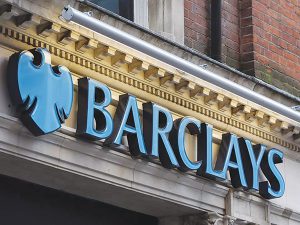A leadership handover is normally time for refreshment and renewal at companies: new directions, exciting targets.
Not so right now at Barclays Plc, where Jes Staley was recently pushed out prematurely as chief executive officer by UK regulators concerned about how he’d presented his personal ties with Jeffrey Epstein.
The British bank’s new CEO, CS Venkatakrishnan, and Chief Financial Officer Tushar Morzaria, who is set to step down after nearly nine years in his role, allowed themselves a victory lap in presenting record profits for 2021. But Venkat, as the CEO likes to be known, had little new to say and no plans to reset the script. Investors will soon want to know what’s next, however.
It’s a tricky moment: Venkat has to keep up with the big banks in front of him and ahead of the small, fast-moving fintechs snapping at his heels. For the bank to consider targeting sustainably higher returns, investment will be key.
But it’s hard to spend heavily until investors trust the returns.
Barclays’s record profits of 7.3 billion pounds ($9.9 billion) in 2021 were nearly three times 2020 earnings, helped by a big swing in Covid-related bad debt charges — 653 million pounds were released from reserves last year, while 2020 was blitzed by 4.8 billion pounds of costs.
The return on tangible equity of 13.4% for 2021 was the first double-digit return in more than a decade. Keeping it above 10% is Venkat’s main existing target. If he does that, the stock will be worth more than its current 45% discount to forecast book value.
But there are headwinds. Barclays’s biggest unit is its corporate investment bank, the source of more than half of revenue and two-thirds of pretax profit. The stunning industrywide investment-banking boom of the past two years will inevitably fade: bond and currency trading, historically the biggest money maker, suffered a 30% revenue fall in dollar terms already last year versus the year before, worse than other debt-focused rivals. That was partly down to a big loss in currency trading.
Venkat has no plans to either grow or shrink the investment bank, just to maintain a top-six ranking. Barclays lifted bonuses by 23% last year, less than US rivals but says total pay for its top bankers is competitive in a hot market. As a European bank, it has a cap on bonuses and pays higher fixed salaries instead. That might make it easier to retain key moneymakers if they know more of their pay is guaranteed. But it might be costlier for shareholders if activity takes a nose dive.
The consumer and payments businesses are where Barclays wants to grow — and needs to invest. Barclays’s strategy, molded by Staley before his departure, was to emulate JPMorgan Chase & Co, with a retail business that balances out an investment bank across business cycles. It’s no accident that Barclays has the biggest collection of JPMorgan alumni in senior roles after Wells Fargo & Co.
More investment is required to keep up with the JPs — although the US bank itself is testing investor nerves with its $3.5 billion spending program right now, which it says is crucial to fighting off challengers
of all sizes across all its businesses.
Venkat’s current plan is to keep investment at roughly the same rate as the past few years. That
has included 500 million pounds to improve its
payments technology and marketing.
—Bloomberg
 The Gulf Time Newspaper One of the finest business newspapers in the UAE brought to you by our professional writers and editors.
The Gulf Time Newspaper One of the finest business newspapers in the UAE brought to you by our professional writers and editors.
